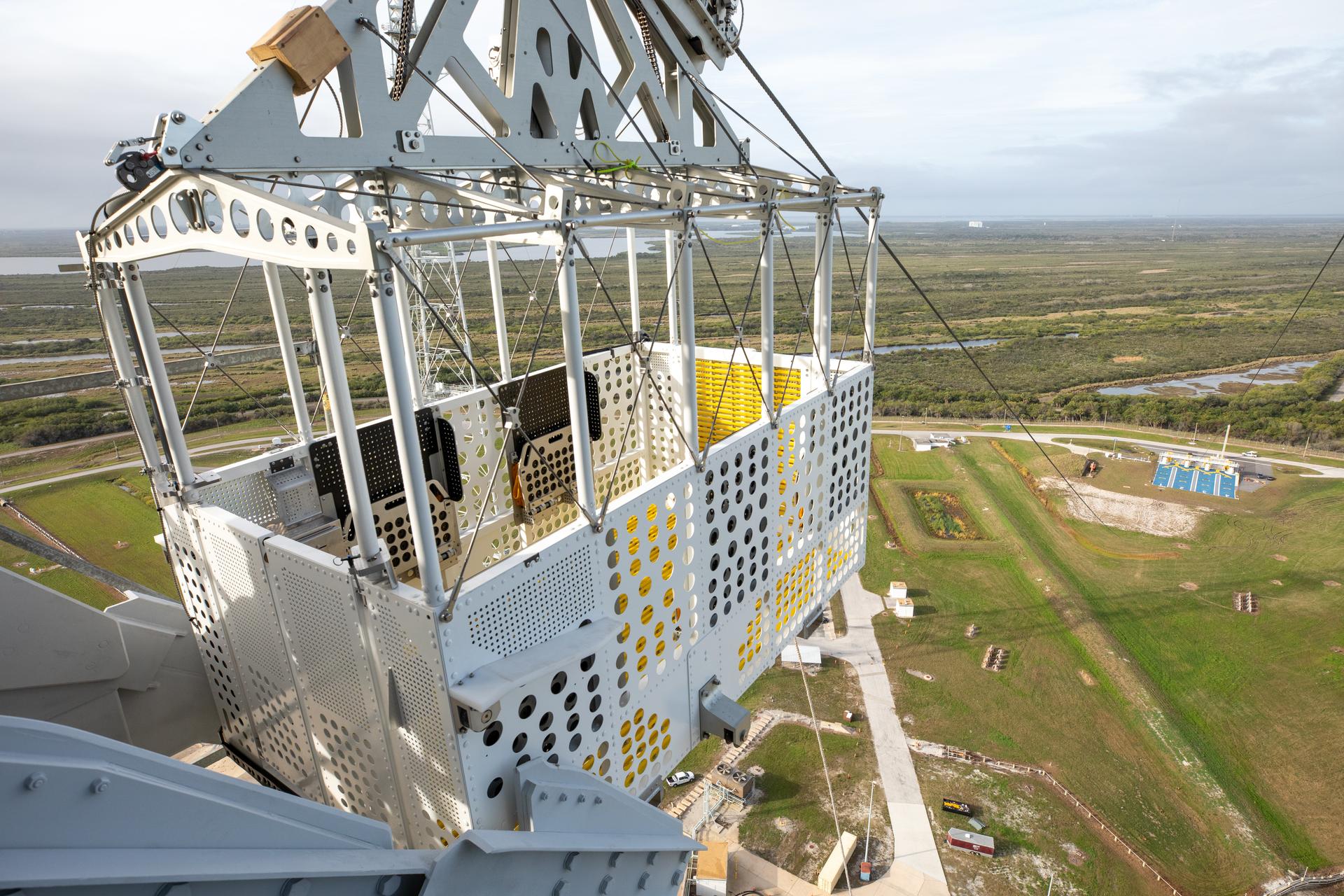
Recently, teams with NASA's Exploration Ground Systems (EGS) Program at the agency's Kennedy Space Center met with engineering teams at a central Florida amusement park to share knowledge on a new braking system NASA is using for its launch pad emergency egress system for Artemis missions.
"We have a new magnetic braking system for the Artemis emergency egress system and NASA hasn't used this technology on the ground infrastructure side before to support launches," said Jesse Berdis, mobile launcher 1 deputy project manager for EGS. "I realized we have neighbors 50 miles from us in Orlando that are essentially the world experts on magnetic braking systems."
For Artemis, teams will use a track cable that connects the mobile launcher to the terminus site near the perimeter of NASA Kennedy's Launch Pad 39B, where four baskets, similar to gondola lifts, can ride down. This is where the magnetic braking system operates to help control the acceleration of the baskets in multiple weight and environmental conditions. At the pad terminus site, armored emergency response vehicles are stationed to take personnel safely away from the launch pad to a designated safe site at Kennedy.
Many roller coaster manufacturers employ the use of an "eddy current braking system," which involves using magnetics to help slow down a vehicle. Though the applications used on the roller coasters differ slightly from what the EGS teams are using for Artemis, the concept is the same, explained Amanda Arrieta, mobile launcher 1 senior element engineer.
However, unlike roller coasters which are typically in use daily for multiple hours on end, the Artemis emergency egress system is there for emergency situations only.
"We don't plan to ever run our system unless we're testing it or performing maintenance," Berdis said.
Regardless of this, teams at Kennedy have ensured the system is able to function for years to come to support future Artemis missions.
"The maintenance crews [at the amusement park] were awesome because they showed us their nightly, monthly, and yearly inspections on what they were doing," Berdis said. "That gave our operations teams a really good foundation and baseline knowledge of what to expect when they maintain and operate this system for the Artemis missions."
Some of the conversations and suggestions teams shared include adding an acceleration sensor in the emergency egress baskets during testing. The sensor will help detect how fast the baskets are going when they ride down.
The emergency egress system is one of several new additions the EGS team is implementing to prepare for future crewed missions starting with Artemis II, and this system especially emphasizes the importance of safety.
"We have a mission, and a part of that mission is in case of an emergency, which we don't expect, is to protect our astronauts and supporting teams at the launch pad," Berdis said. "We want our teams to be safe and, for any scenario we put them in, especially on the ground infrastructure side, it's important for us to do our due diligence. That includes talking to other groups that are the experts in their field to ensure we have looked at all possibilities across the board to ensure our mission is a safe one for our teams."
During the Space Shuttle Program, teams used a similar system for the escape route astronauts and other personnel take in the event of an emergency during a launch countdown. However, instead of using a magnetic braking system for the baskets, teams used a mechanical braking system, which involved using a catch net and drag chain to slow and then halt the baskets sliding down the wire.
For the agency's Commercial Crew Program, SpaceX also uses a catch net and drag chain for its slidewire cable at NASA Kennedy's Launch Complex 39A pad and a deployable chute at Space Launch Complex 40 at Cape Canaveral Space Force Station. Boeing and United Launch Alliance also use a slidewire, but instead of baskets, the team deploys seats, like riding down a zip line, that ride down the slide wires at Space Launch Complex 41 at Cape Canaveral Space Force Station.
Under NASA's Artemis campaign, the agency will establish the foundation for long-term scientific exploration at the Moon, land the first woman, first person of color, and its first international partner astronaut on the lunar surface, and prepare for human expeditions to Mars for the benefit of all.






